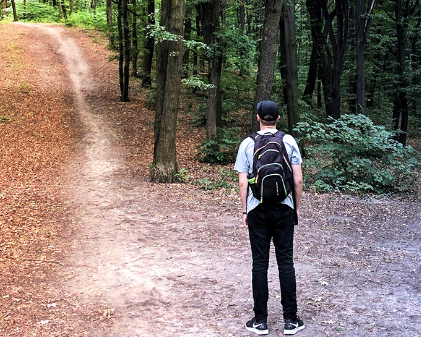I love getting out and hiking, in fact I try to do it as much as I can. Every once-in-a-while, though, I twist my ankle or take a spill and it reminds me that hiking is not a completely harmless activity. You can hurt yourself.
Don’t let that stop you, but be aware of the common hiking injuries and how to prevent them.
Here are 7 common hiking injuries and how to avoid them.
7 Common Hiking Injuries
Plantar Fasciitis
Plantar fasciitis is an overuse injury caused by repetitive stress on the plantar fascia, a part of your foot bottom on the ball on you foot. It usually occurs when hikers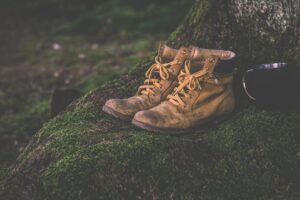 take on steep terrain, wear improper footwear, or walk on uneven ground. If you have never had it, you know that the pain is really pervasive. It causes sharp pains on the bottom of your foot when walking, you definitely want to avoid it.
take on steep terrain, wear improper footwear, or walk on uneven ground. If you have never had it, you know that the pain is really pervasive. It causes sharp pains on the bottom of your foot when walking, you definitely want to avoid it.
How to avoid:
I would recommend that hikers take steps to prevent getting plantar fasciitis. Hikers should be sure to stretch and warm up before any hikes, as this will help reduce the risk of injury. Gear-wise, hikers should wear supportive and well-fitted hiking shoes or hiking boots that are designed for the terrain they are hiking on and replace them regularly. Furthermore, hikers should take frequent rest breaks and keep their legs elevated when possible.
If the pain gets bad enough, hikers should consider using a night splint to provide support and stretch the plantar fascia while sleeping.
Sprained Ankles
For me, the dreaded sprained ankle is my most-frequent hiking injury. Sprained ankles occur when a hiker twists their foot during a misstep on uneven terrain. Hikers often turn their ankles on rocks, tree roots, or other obstacles on the 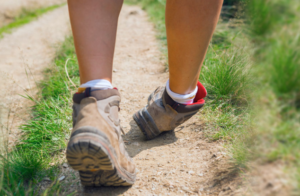 trail. This is an especially common trail running injury.
trail. This is an especially common trail running injury.
How to avoid:
To help prevent spraining an ankle while hiking, it’s important to take proper precautions. Make sure to wear properly fitted, supportive hiking boots that can give you a little support if you step on the wrong object or terrain. Think about the evenness of the trail that you will be on when to decide between using hiking boots vs. shoes vs. sandals.
Don’t be afraid to take breaks and rest, because in my experience you are more likely to twist an ankle when you are fatigued. If you feel any pain or discomfort, take a break and assess the situation.
Achilles Tendinitis
Achilles tendinitis is an overuse injury caused by repetitive stress on the Achilles tendon. It often occurs when hikers push themselves too far, too fast, and don’t give their body time to adjust to the demands of the terrain. It is especially common with runners, but it can impact hikers too — especially those who put on lots of miles.
You will probably experience more achilles tendinitis as you age, especially above around 40 or 45.
How to avoid:
Stretch your ankle and calf out a bit before a hike getting it warm and limber. You will reduce the odds of tendinitis if you have the right footwear, and for people who are prone to achilles issues, I suggest never wearing hiking sandals as they don’t have the same support.
Don’t hike every single day. Try to have rest days throughout the hiking season. Your body needs rest.
Knee Injuries
Knee injuries are dreaded for anyone who is active, and hikers are not immune. Poorly fitting or worn footwear, weak muscles, taking unnecessary risks, and improper hiking form can all contribute to knee injuries. 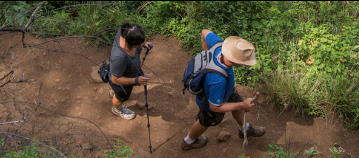
How to avoid:
It might sound funny, but you need proper hiking form to reduce knee injuries on the trail. What is good hiking form? Have an upright posture, keeping a slight bend in your knees, and avoiding locking your knees. Additionally, it is important to shift your weight from one leg to the other when going up and down hills, and shorten your stride both on uphills and downhills as it will help you keep your weight more centered, causing less knee strain.
Having good hiking form also means not taking super long strides, especially when going downhill. Keep your feet under you, as this will put less pressure on your knees.
Blisters
We have all had blisters. Blisters are a common issue for hikers due to the friction of their footwear rubbing against their feet. Wearing the wrong type or size of shoes or socks can increase the risk of getting blisters.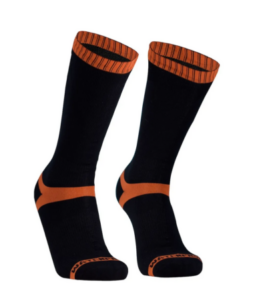
How to avoid:
I recommend a few things to help prevent blisters on your feet while hiking. Make sure to wear the proper footwear for the activity and that your shoes fit correctly and are not too tight or too loose. Additionally, consider wearing two pairs of socks – one thin layer and one thicker layer (dependent on the temp, of course) – to help absorb shock and reduce friction on your skin. Lastly, make sure to change your socks and shoes as soon as they become damp or sweaty to help keep your feet dry. Consider waterproof hiking boots if you know you will be walking in wet or swampy conditions.
Dehydration (and Heat Stroke)
Dehydration is bad news, and unless the others on this list that are more orthopedic-related, dehydration is an internal medicine issue that can be really serious. It occurs when you go too long without the right water intake, or when you lose more water (often through perspiration) than your body is able to consume. While not an “injury” in the same way as the others on this list, it is perhaps the most serious in terms of medical implications.
While Heat Stroke and Dehydration are not exactly the same, we group them together because the way to avoid them is quite similar from a practical standpoint.
How to avoid:
You need to drink more water than you think. Drink plenty of water before, during, and after your hike. Make sure to bring plenty of water with you, preferably in a non-plastic durable water bottle, and drink about one liter for every two hours of hiking. Bring snacks that are high in electrolytes. Foods like bananas, oranges, and nuts can help replenish lost electrolytes and keep you hydrated. You can also buy powders that mix with your water and help provide more electrolytes.
Wear light, breathable clothing. Wearing clothing that is too heavy or tight can cause you to sweat more and become dehydrated faster, and stay in the shade when possible. Try to find a shady spot to rest and drink water when you can. This will help you stay cooler and hydrated.
Mosquito and Bug Bites and Stings
Depending on where you are, mosquito bites, bug bites, or bee or wasp stings can be a factor. Know what might be around, given the area and time of year, and take appropriate precautions. If you are allergic to any type of bite or sting, be extra careful.
How to avoid:
To avoid getting bitten by mosquitoes or stung by bees, wear protective clothing. Long–sleeved shirts and pants, as well as a hat, can help protect you from bites. You will definitely want to use insect repellent. Apply insect repellent with DEET or other active ingredients to exposed skin and clothing before you head out on the trail.
If you are known to be allergic to bee or wasp stings, carry whatever antidote your doctor recommends along with you, and if you are hiking with someone, be sure to tell them where they can find it if you are unable to.
Other Hiking Injury Factors
Some of the risk factors associated with hiking come down to where you hike, and the difficulty and nature of the trail.
Hiking on Ice
Hiking on ice introduces challenges of its own, especially when on a trail that might have other variables like elevation or uneven footing. Wear shoes or boots with non-slip soles and good treads to provide better traction, and even consider crampons which make a big difference when walking on ice. When possible, try to walk on cleared patches even if it is slightly off the trail, rather than on icy paths. If you must walk on ice, take slow, small steps and keep your arms out for balance.
non-slip soles and good treads to provide better traction, and even consider crampons which make a big difference when walking on ice. When possible, try to walk on cleared patches even if it is slightly off the trail, rather than on icy paths. If you must walk on ice, take slow, small steps and keep your arms out for balance.
Scrambling
Scrambling on a hike means to climb or traverse a steep or rocky section of the trail using your hands and feet. It is a type of off-trail climbing that is often done on steep, rocky terrain. It requires a certain level of fitness and agility, and introduces additional scrape or bruise hazards. Be sure to take it slow when scrambling, don’t go on terrain above your skill level, and consider wearing tough gloves and additional protective clothing.
Wilderness First Aid
It is possible to get trained on what to do in outdoors situations, and there is even a certified you can get for Wilderness First Aid, something we would recommend if you plan to spend significant time outdoors. You can get trained on many injury situations you might encounter in the outdoors, over the course of a couple full-day session.
The class we recommend is the WFA certification class from REI. You will be trained on the basics of Wilderness First Aid, and assuming you show up and pass the class, will be certified.

